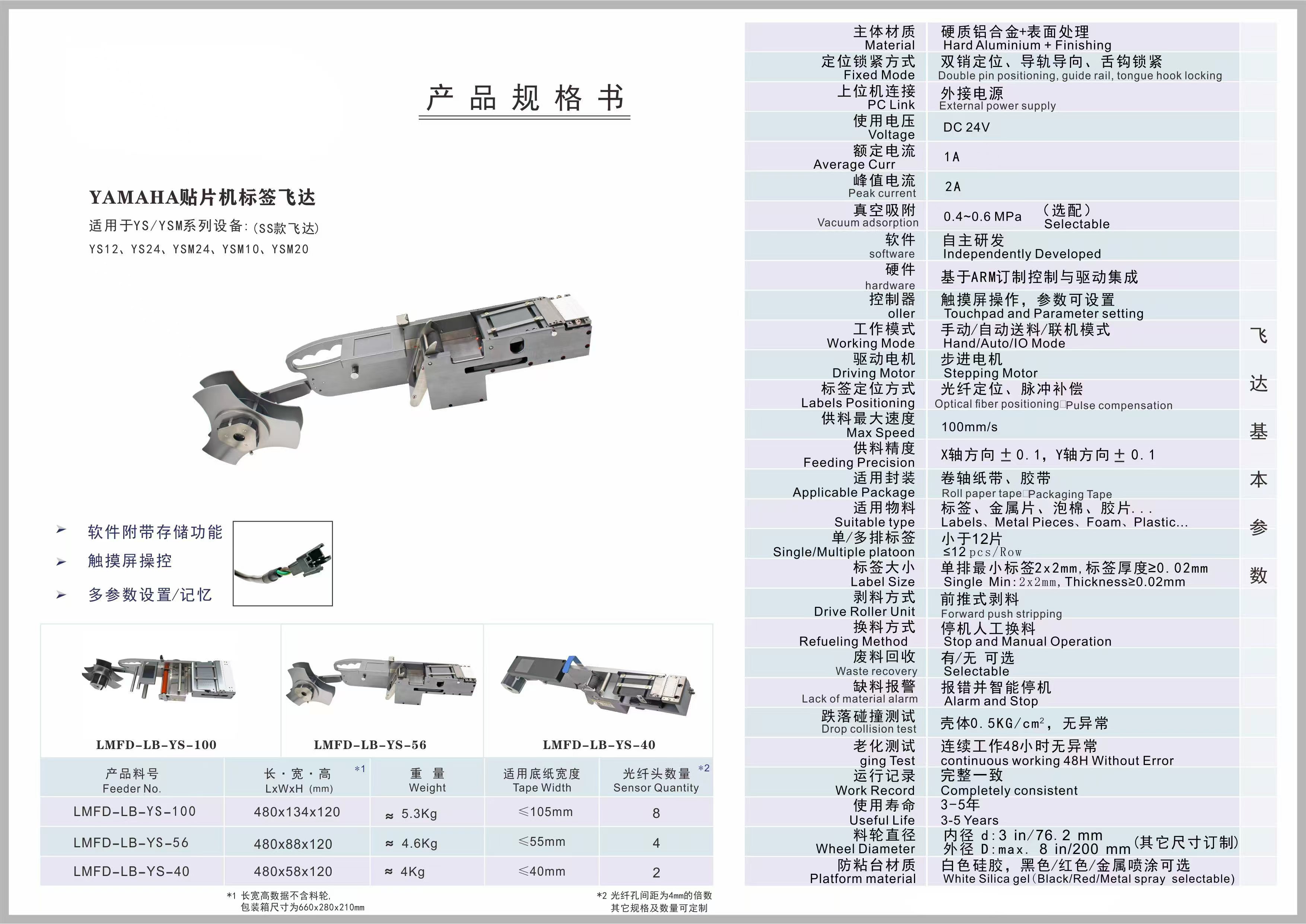Product Number:JH-BQ-01
Product Usage:Pick and place machines of different brands such as yamaha, samsung, hanwha, fuji, panasonic, juki, ASM, etc. Pick and place machine,placement machine, labeling machine, labeling machine and non-standard automatic production line
Applicable Industries:Pick and place label feeder is widely used in the electronics manufacturing industry, especially in SMT (Surface Mount Technology) production lines. It is suitable for attaching labels to various electronic components, such as capacitors, resistors, chips, etc. In addition, it can also be used for automated labeling needs in other industries, such as medicine, food, cosmetics, etc.

National Advisory Hotline:
+86 18975335491Revolutionize your SMT production with JHIMS precision labeling technology.
The JHIMS SMT Label Feeder is an advanced automated solution designed for seamless integration with pick and place machines from Yamaha, Samsung (Hanwha), and other leading brands. This device enhances efficiency in surface-mount technology (SMT) production lines by delivering high-speed, precise label application. Perfect for industries such as automotive, medical devices, and consumer electronics, it ensures top-tier product traceability and quality.
.jpg)
| Feature | Specification |
|---|---|
| Label Size Compatibility | Single to 12 rows, up to max size |
| Liner Width | 60mm-100mm, customizable |
| Feeding Speed | Up to 12,000 UPH |
| Feeding Accuracy | ±0.2mm |
| Operating Temperature | -20°C to 65°C |
| Durability (MTPF) | ≥20,000 hours |
| Dimensions | 743.0mm x 97.0mm x 200.0mm |
| Weight | Approx. 5.0 kg (without base) |
The JHIMS SMT Label Feeder works seamlessly with:

The JHIMS SMT Label Feeder is ideal for:
Unlike generic label feeders, JHIMS offers superior speed (12,000 UPH vs. competitors’ 8,000-10,000 UPH), broader material compatibility, and a durable design that outlasts industry averages. Our integration with top-tier brands like Yamaha and Hanwha ensures a competitive edge in electronics manufacturing.
Elevate your SMT production with the JHIMS High-Speed SMT Label Feeder. Contact us today for a quote or visit our product range to explore more solutions.
© 2025 JHIMS. All rights reserved.
